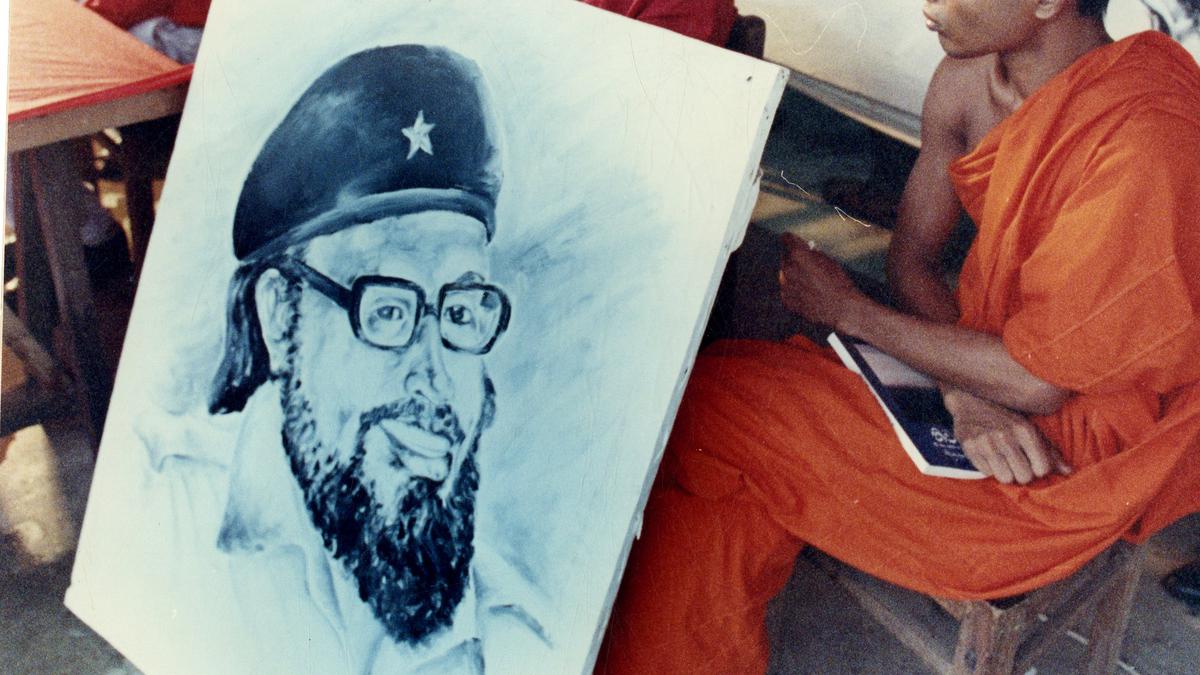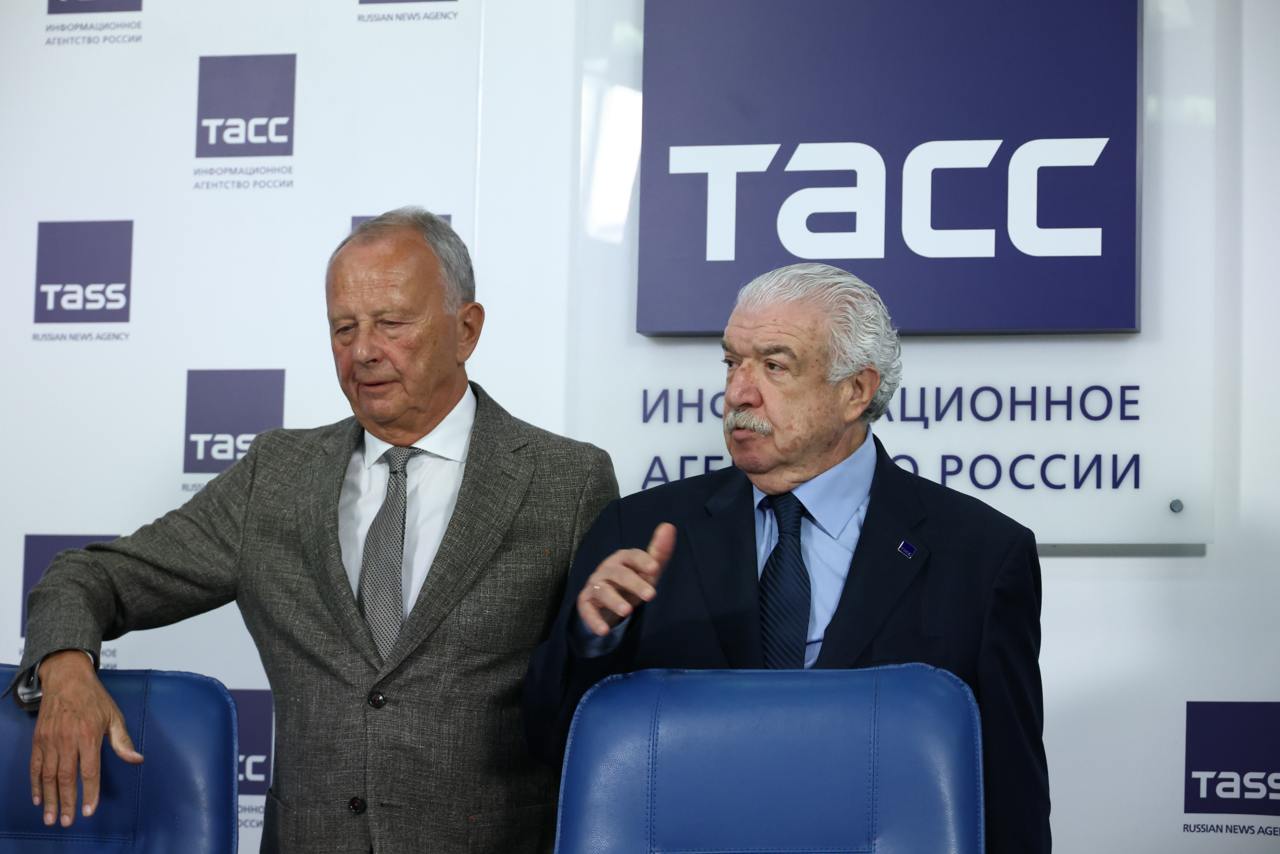
The story up to now: On February 5, an unlikely customer landed in Delhi from Sri Lanka on an official invitation. Anura Kumara Dissanayake, the chief of the National People’s Power (NPP) alliance, obtained a crimson carpet welcome, following which two high officers hung out with him within the capital. The principal constituent of the NPP is the Janatha Vimukthi Peramuna (JVP), and Mr. Dissanayake is its chief. The Indian outreach to the JVP has set off a lot hypothesis in Sri Lanka. The nation is to undergo a presidential election this 12 months adopted by parliamentary elections this 12 months or the following. A survey performed by the Health Policy Institute confirmed that fifty% of respondents favoured Mr. Dissanayake as the following President. Since its inception, the celebration has had a foul historical past with India. But Mr. Dissanayake’s conferences with National Security Adviser A. Okay. Doval and External Affairs Minister S. Jaishankar have created new optics within the run-up to the election.
Who are the JVP?
Over its 5 decade-existence, the JVP, which calls itself Marxist, however has been largely a Sinhala nationalist celebration, has seen India as an expansionist energy searching for to colonise Sri Lanka.
The JVP was shaped in 1965. Its founder Rohana Wijeweera, who got here from a household of modest means in coastal southern Sri Lanka, already had publicity to leftist ideologies by means of the Communist Party of Sri Lanka, earlier than he went as a pupil to Moscow’s Patrice Lumumba International University, the place he mingled with leftists from everywhere in the world. On his return, he aligned himself with the Ceylon Communist Party (Maoist), earlier than breaking away to kind the JVP, with the intention of making a revolution to show Sri Lanka right into a socialist state. Its members have been largely the youth who have been unable to search out jobs within the Sri Lankan economic system, comprising British-era buying and selling homes manned by Colombo’s English-speaking elites.
The cadres of JVP imbibed the celebration ideology from lectures referred to as the Five Classes — on the disaster of the capitalist system in Sri Lanka; historical past of Sri Lanka’s left motion; historical past of socialist revolutions; Indian expansionism; and the trail of revolution in Sri Lanka. However, inside no time, JVP discovered it extra expedient to push class battle to the back-burner, and have become a car for majoritarian Sinhala-Buddhist sentiments.
What occurred in 1971?
In the 1970 election, the JVP campaigned for Sirima Bandaranaike’s leftist United Front coalition comprising of the Sri Lanka Freedom Party (SLFP), the Lanka Sama Samaja Party and the Communist Party. But the JVP’s help for Sri Lanka’s ‘bourgeois’ left was short-lived. In April 1971, it carried out an armed rebel. The plan was to take over police stations first. The authorities, regardless of receiving prior intelligence, was caught unprepared. A state of Emergency was declared and Wijeweera was jailed. But the Sri Lankan tri-services have been a ceremonial pressure and the federal government needed to enchantment to international nations for assist. The Indian Army, Navy and Air Force performed an element in thwarting the rise up. The rebel was overcome after just a few weeks and a few 15,000 JVP cadres have been arrested. The loss of life toll was over a 1,000, together with civilians, police personnel and Sri Lankan armed forces personnel.
In 1977, with the election of J. R. Jayewardene, who went on to politically dominate the nation for a decade, the Sri Lankan economic system modified full tilt from the Bandarnaike period of socialist nationalisation, to liberalisation and the entry of free market forces. Jayewardene additionally launched all JVP prisoners together with Wijeweera, who went on to contest the 1982 presidential election, polling 4% of the vote. Some make the case that Jayewardene used the JVP to weaken the SLFP and the “old left”. Indeed, the JVP made SLFP’s Sinhala Buddhist plank its personal from in regards to the time of the 1983 anti-Tamil riots and the flaring up of the Sinhala-Tamil ethnic battle.
What was the context for the JVP’s second rebel?
Delhi’s rising involvement within the battle led to anti-India sentiment among the many Sinhalese majority. In June 1987, the Indian Air Force carried out Operation Poomalai to airdrop meals to the north of Sri Lanka, which was Tamil-dominated, at a time when Sri Lankan forces had laid siege to the province, believing that they’d cornered the Liberation Tigers of Tamil Eelam (LTTE) and its chief Velupillai Prabhakaran. The subsequent month got here the India-Sri Lanka Accord below which Sri Lanka launched an modification in its Constitution to devolve political energy to the Tamil north and east. However, the LTTE rejected the Accord, and the troopers that India despatched below the banner of the Indian Peace Keeping Force to disarm the LTTE, quickly discovered themselves in a battle towards the group.
JVP launched protests towards the presence of Indian troops on Sri Lankan soil. Among the Sinhalese, the protests discovered widespread help. The Indian Prime Minister Rajiv Gandhi narrowly escaped an assassination try when he was attacked by a sailor at a guard of honour on the airport after the signing of the Accord in Colombo. Even SLFP employees joined fingers with the JVP on the bottom. However, the JVP didn’t tackle the Indian Army and even the Tamils, directing its violence on fellow Sinhalese in southern Sri Lanka. Government officers, police personnel, lecturers, college students of rival unions and political activists — with its lists of “traitors”, the JVP went in spite of everything of them. Lampost hangings, tyre pyres and our bodies on roads have been a typical sight. Chandrika Bandaranaike Kumaratunga’s husband, Vijaya Kumaratunga, a charismatic movie star-turned-politician, was shot useless. The authorities’s brutality in placing down the insurgency was no much less. The massacre lasted till 1989. The variety of folks killed is cited as 60,000. Wijeweera was additionally among the many useless.
What occurred to the JVP after that?
In the Nineteen Nineties, the JVP tried to place its previous behind and entered the political mainstream below a brand new management. It received one seat within the parliamentary elections of 1994. It even contested elections for provincial councils, which it had opposed as an Indian imposition below the thirteenth Amendment.
In the 2001 parliamentary election, the JVP received 16 seats, indicating that it had gained the belief of sections of voters. Its excessive level got here when it contested in coalition with the SLFP-led People’s Alliance in 2004. The election was fought on an anti-ceasefire plank. The earlier United National Party (UNP) authorities had entered right into a Norway-brokered truce with the LTTE in 2002, on phrases that have been seen as favouring the LTTE. In 2004, President Kumaratunga known as for contemporary elections, naming Mahinda Rajapaksa because the prime ministerial face of the People’s Alliance-JVP coalition, known as the United People’s Freedom Alliance (UPFA). Of the 105 seats UPFA received within the 225-seat parliament, the JVP’s share was 39, its highest ever tally. Months later it pulled out of the cupboard over the mechanics of sharing tsunami aid help with the LTTE. It continued to help the federal government from the skin, and likewise supported Rajapaksa’s marketing campaign within the 2005 presidential election.
However, within the post-war interval, JVP’s fortunes waned. Not solely did President Mahinda Rajapaksa dominate the political panorama because the architect of the May 2009 navy victory over the LTTE, a number of Buddhist nationalist events that had come up by then have been competing for a similar area as JVP. In 2008, the JVP additionally suffered a vertical break up.
In 2015, Mr. Dissanayake shaped a coalition with 25 different organisations, together with civil society teams, ladies’s organisations and others known as the NPP. The JVP now contests elections below the banner of the NPP, seen by some as a “rebranding” train to shake off its violent previous that continues to hang-out it. Mr. Dissanayake has described the NPP as a nationwide liberation motion.
How does the NPP operate now?
When the mass rebellion towards the Gotabaya Rajapaksa regime started in March 2022 over worsening financial circumstances, the protests have been at first neighbourhood candle gentle vigils that grew to massive gatherings within the metropolis’s Galle Face sea entrance. Later, opposition events together with the NPP and JVP, breakaway organisations just like the Frontline Socialist Party and Inter University Students’ Federation additionally converged at Galle Face. The involvement of those organisations, and a few incidents of violence grew to become the justification for a crackdown on the protests by the federal government below the brand new management of President Ranil Wickremesinghe.
Subsequently, the JVP/NPP place towards the International Monetary Fund deal, whose situations included sale of public sector enterprises, greater utility payments, greater taxes and different “anti-people” measures, earned it reward and an enormous following. It has additionally taken common positions towards the “sale of national assets” to foreigners. In 2020-21, it had been steadfast in its opposition to the plan to supply 49% stake within the East Container Terminal at Colombo Port to the Adani group, which led the Gotabaya Rajapaksa authorities to cancel a tripartite settlement with India and Japan to develop the terminal. It additionally questioned the wind farm cope with Adani, and the cope with India to develop the oil tank farm in Trincomalee. It has been an opponent of the Indian Oil Corporation’s presence and enlargement in Sri Lanka since 2002, when IOC first started operations in Sri Lanka. In 2017, regardless of its reported proximity to China, it had additionally protested the sale of the Hambantota Port to China.
However, of late, the JVP is of the view that the fact of India as Sri Lanka’s closest neighbour and “major political and economic centre” can’t be ignored. While India and JVP have had some contact beforehand, that is the primary time that its leaders have been invited to Delhi as an opposition celebration. In politically charged Sri Lanka, numerous alerts are being learn from this new friendship. But maybe India is studying from its expertise within the Maldives, the place a brand new President that India did not get to know higher earlier than his election, has junked his predecessor’s “India First” international coverage, and given a definite pro-China tilt to his international coverage.
The author is an impartial journalist.
Source: www.thehindu.com




